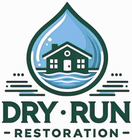Water damage can be a homeowner’s worst nightmare. From burst pipes to leaking roofs, water damage can cause costly repairs and long-term structural issues. Fortunately, if you have homeowners insurance, you may be able to get financial help to cover the water damage repair. However, navigating insurance claims can be tricky. Understanding the process and knowing how to present your case can make a significant difference in getting your insurance to pay for water damage.
Understanding Water Damage Insurance Coverage
Insurance policies typically cover certain types of water damage, but not all situations qualify for a payout. Most homeowners insurance policies cover sudden and accidental water damage, such as a burst pipe or an overflowing washing machine. However, they do not cover gradual damage caused by poor maintenance, neglect, or flooding. It is essential to review your policy and understand what is covered before filing a claim.
Steps to File a Water Damage Insurance Claim
Evaluate and Document the Damage
Once you discover water damage, act quickly. Take detailed photos and videos of the affected areas, showing the extent of the damage. This documentation will serve as crucial evidence when submitting your claim. If necessary, seek a professional assessment to determine the severity of the damage.
Notify Your Insurance Provider
Inform your insurance company as soon as possible about the damage. Policies often have specific timeframes for reporting claims, so avoid unnecessary delays. Provide them with all the gathered evidence and a clear explanation of what happened.
Take Measures to Prevent Additional Damage
To increase your chances of approval, take reasonable steps to prevent further damage. Shut off the water source, dry the area, and make temporary repairs if needed. Keep receipts for any emergency repairs, as they may be eligible for reimbursement.
Obtain an Independent Damage Estimate
Getting an independent estimate from a contractor can help you negotiate a fair settlement with your insurance provider. Some insurance companies may offer lower compensation, so having multiple estimates allows you to compare and make informed decisions.
Review Your Policy’s Terms and Conditions
Insurance policies often include specific conditions and exclusions. If damage results from long-term leaks or maintenance issues, your claim may be denied. Understanding these details will help you better navigate the claims process.
Challenge an Unfair Settlement
If your claim is denied or the offered payout is insufficient, you can appeal the decision. Request an explanation from your insurer, provide additional evidence if needed, and consider seeking assistance from a public adjuster or legal professional to advocate for a fair settlement.
Repairing Ceiling Water Damage Through Insurance
Ceiling water damage is a common problem caused by leaks, burst pipes, or plumbing issues. If you experience this type of damage, start by identifying and stopping the source of water. Once the problem is contained, document the damage and report it to your insurance provider for assessment.
The cost of repairs depends on the extent of the damage and the materials required for restoration. Minor cases may only require repainting, while more severe damage may necessitate drywall replacement or structural repairs. If your insurance claim is approved, the payout will cover the necessary fixes to restore your home.
Common Mistakes to Avoid When Filing a Claim
A common mistake homeowners make is delaying the reporting of water damage. Insurance companies may reject claims if they believe the damage worsened due to inaction. Another common mistake is not keeping thorough records of the damage and necessary repairs. Without clear evidence, your claim may be disputed or underpaid. Additionally, making temporary repairs without keeping receipts can result in losing potential reimbursements.
The Role of Professional Water Damage Restoration Services
Hiring professional water damage repair services ensures a thorough and efficient restoration process. Experts use advanced drying equipment to prevent mold growth and repair structural damage effectively. Insurance providers often prefer licensed contractors because their work meets safety and quality standards, increasing the likelihood of claim approval.
Frequently Asked Questions
What is the deadline for filing a water damage insurance claim?
Each insurance company has its own timeframe for reporting claims, typically ranging from 24 hours to a few weeks. It is advisable to report the damage as soon as possible to prevent potential claim denial.
Can homeowners insurance help with mold problems caused by water damage?
If mold develops due to a covered water damage event, such as a burst pipe, your insurance may cover the remediation. However, mold caused by long-term neglect or maintenance issues is usually not covered.
Will my insurance cover ceiling water damage repairs?
If the damage results from a sudden and accidental incident, such as a pipe burst or roof leak, insurance will likely cover the repair costs. However, claims related to ongoing leaks or poor maintenance may be denied.
How should I respond if my insurance claim is denied?
If your claim is denied, carefully review the denial letter and request clarification from your insurer. If you believe the decision is unfair, gather additional evidence, seek a second opinion, or consider consulting a public adjuster.
Can I make repairs before my claim is processed?
Yes, making temporary repairs to prevent further damage is advisable. Just ensure you document the repairs and keep receipts, as these costs may be reimbursed by your insurance provider.
Conclusion
Filing a water damage insurance claim requires careful documentation, timely action, and a clear understanding of your policy. By following the right steps and avoiding common pitfalls, you can improve your chances of receiving fair compensation. If you encounter difficulties, seeking professional guidance can help you navigate the claims process successfully. Taking preventative measures and maintaining your home can also reduce the risk of future water damage.
